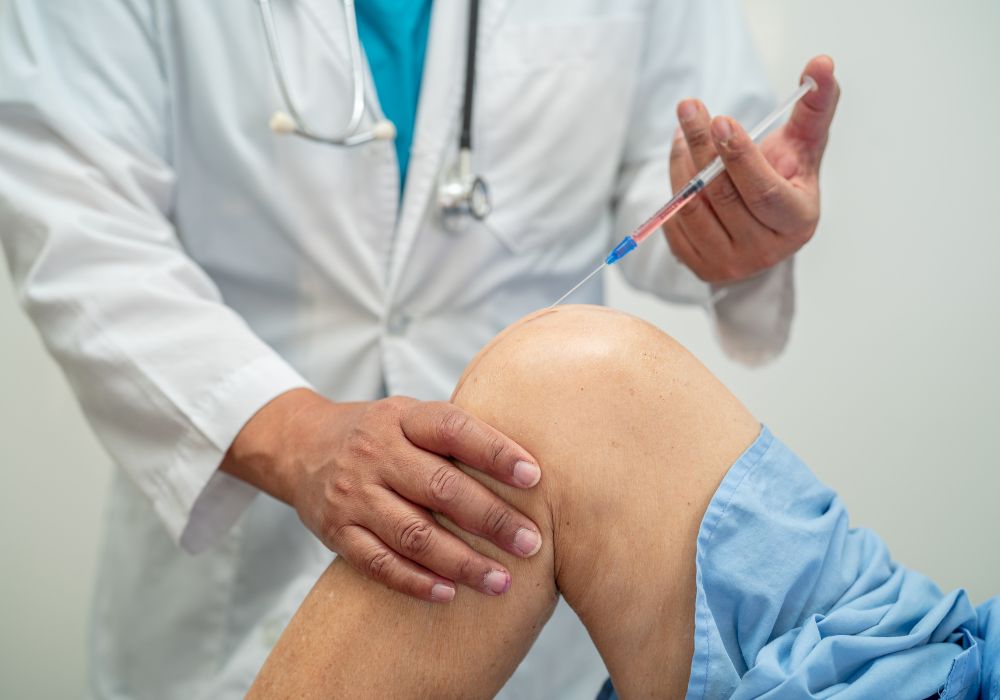When it comes to managing chronic pain, many patients face a choice between PRP (platelet-rich plasma) therapy and steroid injections. While both treatments aim to alleviate discomfort, they differ significantly in their approach and long-term effects. PRP therapy offers a natural, regenerative solution that promotes healing and provides lasting pain relief, making it a superior option for many individuals seeking long-term results.
Steroid injections, such as corticosteroids, work by reducing inflammation and suppressing the immune response. This can lead to quick pain relief, but the effects are often temporary. In contrast, PRP therapy harnesses the body’s own healing mechanisms by concentrating platelets from the patient’s blood and injecting them into the affected area. This process stimulates tissue repair and regeneration, addressing the root cause of pain rather than merely masking symptoms.
For those considering treatment options, the PRP procedure in Calgary offers a promising alternative to traditional steroid injections. While steroids may provide faster initial relief, PRP therapy has shown better long-term outcomes in many cases, particularly for conditions like osteoarthritis and soft tissue injuries. Patients often experience sustained improvement in pain levels and functionality, with the added benefit of avoiding potential side effects associated with repeated steroid use.
Key Takeaways
- PRP therapy stimulates natural healing processes for long-lasting pain relief
- Steroid injections offer quick but temporary pain reduction
- PRP treatment shows better long-term outcomes with fewer side effects
Understanding PRP and Steroid Treatments
PRP and steroid treatments offer distinct approaches to pain management. PRP harnesses the body’s natural healing processes, while steroids provide rapid anti-inflammatory effects.
The Science Behind PRP
Platelet-rich plasma (PRP) treatment uses a patient’s own blood to promote healing. Blood is drawn and processed to concentrate platelets. These platelets contain growth factors that stimulate tissue repair and regeneration.
PRP injections deliver a high concentration of platelets directly to injured areas. This boosts the body’s natural healing mechanisms. The growth factors in PRP help:
- Reduce inflammation
- Stimulate cell growth
- Accelerate tissue repair
PRP treatment aims to address the root cause of pain by promoting long-term healing. It’s often used for chronic tendon injuries, ligament sprains, and joint pain.
Steroid Injections: Uses and Limitations
Corticosteroid injections are powerful anti-inflammatory medications. They quickly reduce pain and swelling in joints and soft tissues. Common uses include:
- Arthritis pain
- Tendonitis
- Bursitis
Steroids work by suppressing the immune response in the targeted area. This provides rapid relief but doesn’t promote healing. The effects are usually temporary, lasting weeks to months.
Limitations of steroid injections:
- May weaken tendons and cartilage with repeated use
- Can elevate blood sugar in diabetic patients
- Effectiveness often decreases with repeated injections
Steroid injections are best for short-term relief of acute inflammation. They don’t address underlying tissue damage or promote long-term healing like PRP.
Comparative Analysis and Long-Term Implications
PRP and corticosteroid injections offer different approaches to pain management and tissue healing. Their efficacy, safety profiles, and long-term outcomes vary across different joint conditions.
Efficacy and Safety of PRP vs Steroids
PRP injections have shown promising results in long-term pain relief for various musculoskeletal conditions. A systematic review and meta-analysis of randomized controlled trials found that PRP and corticosteroid injections produced similar outcomes for pain relief and functional improvement over medium to long-term follow-up periods.
Corticosteroids often provide rapid short-term relief but may have diminishing effects over time. They carry risks of accelerated joint degeneration and potential complications with repeated use.
PRP, being derived from the patient’s own blood, presents a lower risk of adverse reactions. It aims to promote tissue healing and regeneration, potentially offering more sustainable benefits.
Prevalence and Outcomes in Treating Joint Conditions
Knee osteoarthritis is a common condition where both PRP and corticosteroid injections are utilized. Studies have indicated that PRP may be more effective for long-term pain management in knee osteoarthritis compared to corticosteroids.
A randomized trial focusing on lateral epicondylitis (tennis elbow) compared 6-week, 3-month, and 1-year outcomes between PRP and corticosteroid injections. Results suggested that PRP might provide more durable improvements in pain and function.
For rotator cuff lesions, research has examined short-term (3-6 weeks), medium-term (8-12 weeks), and long-term (over 12 weeks) effects. PRP for rotator cuff tear showed potential advantages in tissue healing and pain reduction over extended periods.
Conclusion
PRP treatment offers a compelling alternative to steroid injections for long-term pain relief. Its ability to promote natural healing and tissue regeneration addresses the root cause of pain, rather than just masking symptoms. While steroids may provide faster initial relief, PRP’s effects tend to be more sustainable over time.
Patients seeking lasting solutions for chronic pain conditions should consider PRP as a viable option. As with any medical treatment, consulting a qualified healthcare professional is essential to determine the most appropriate approach for individual needs.

